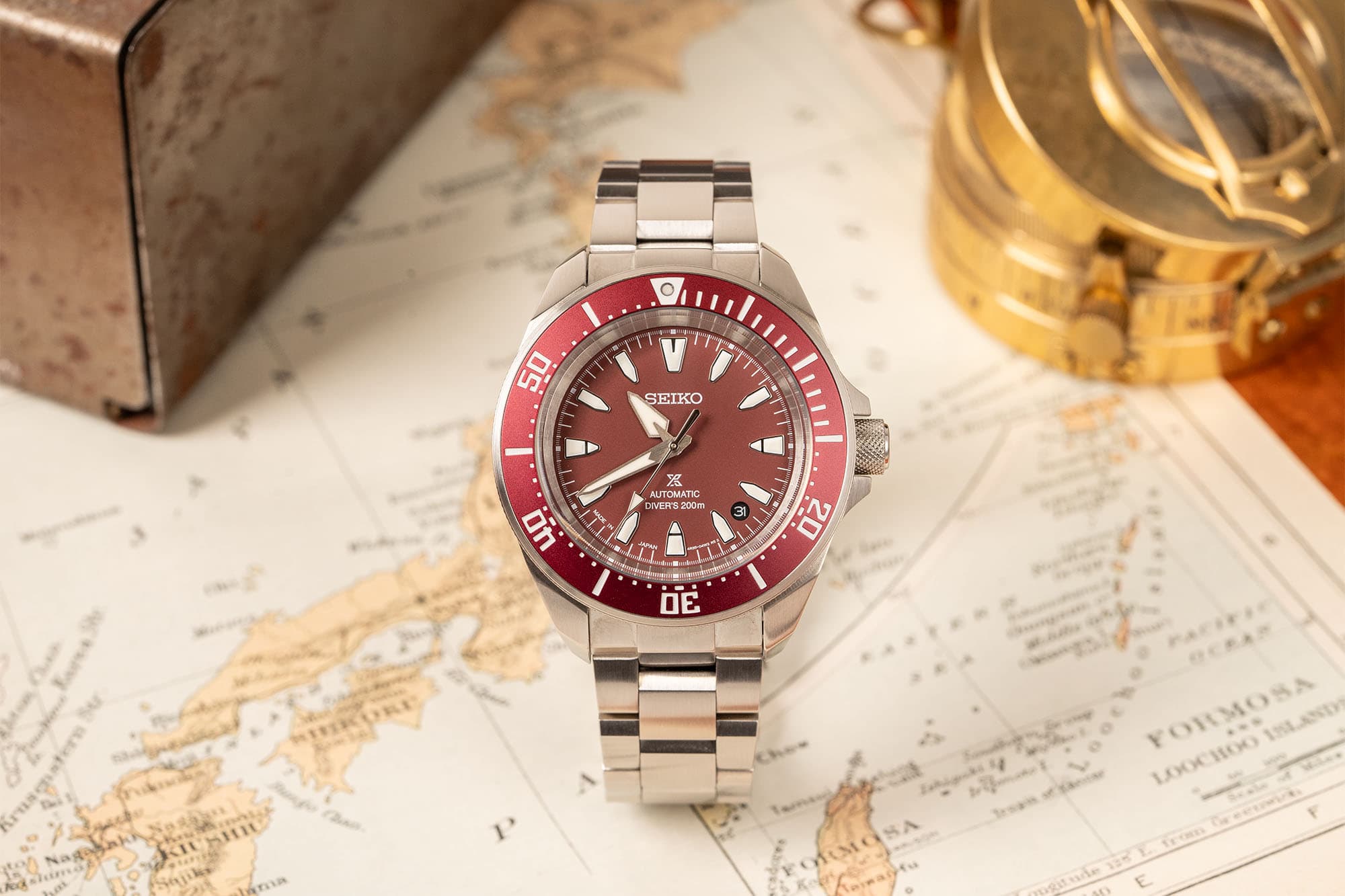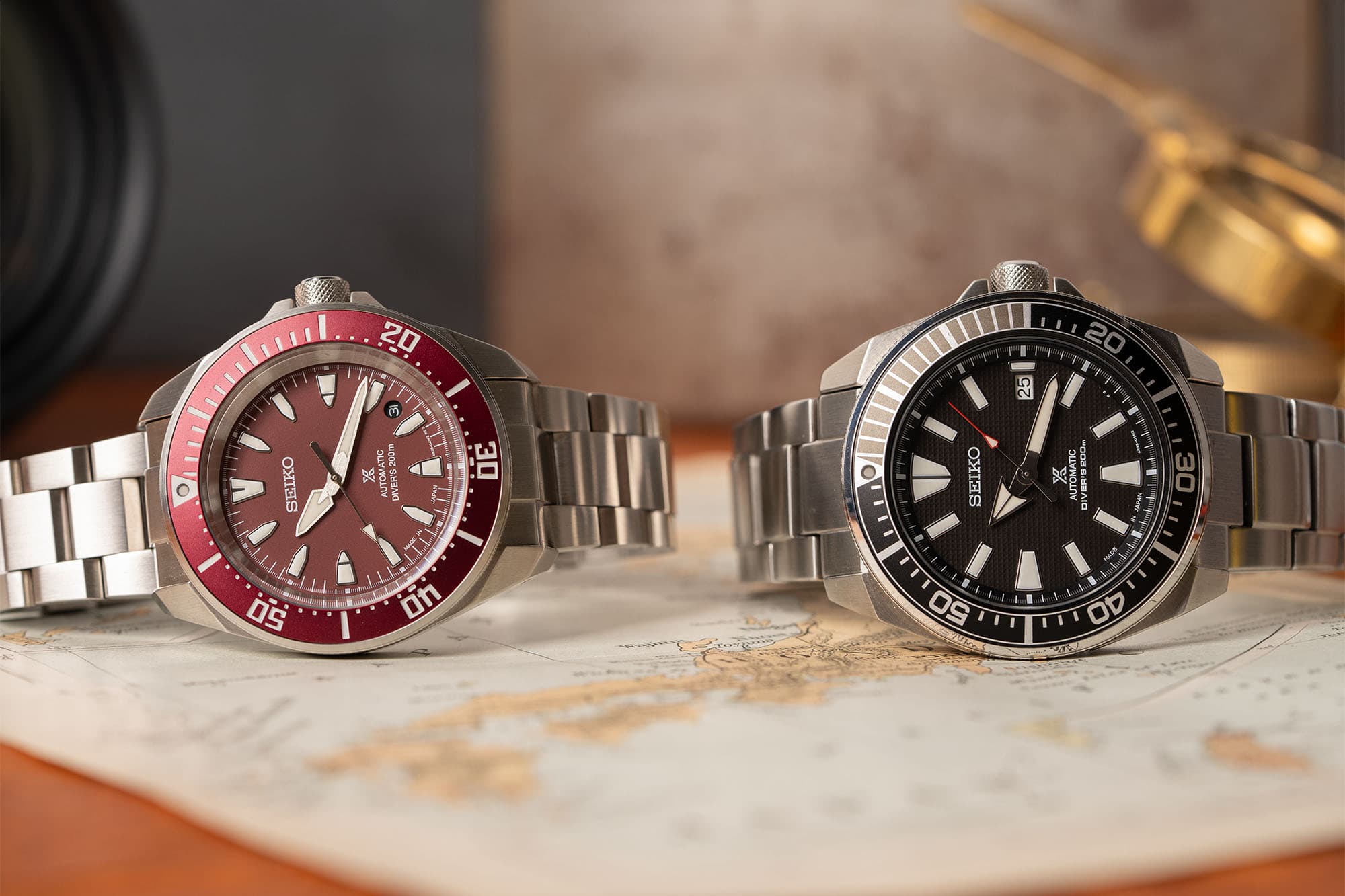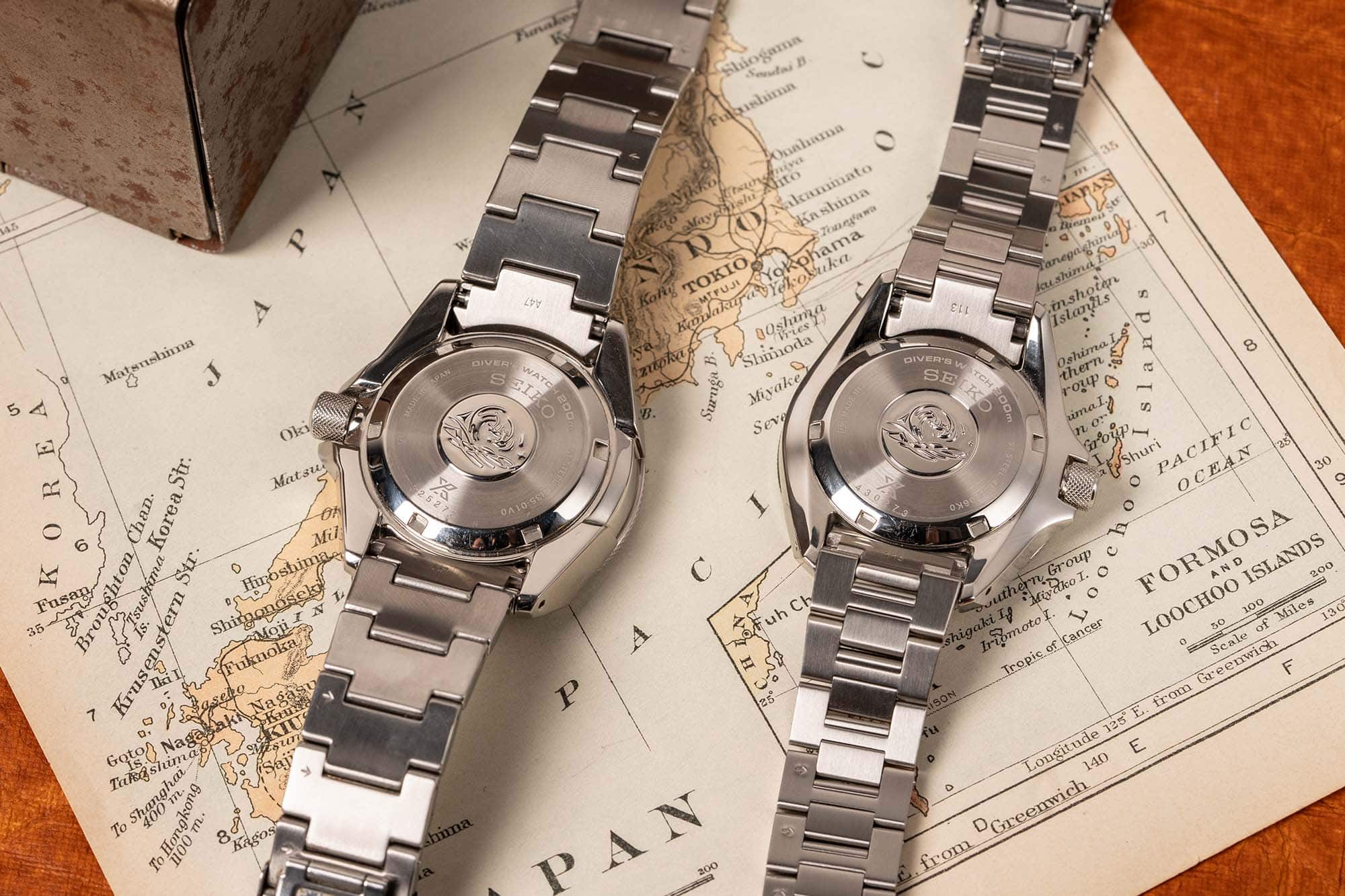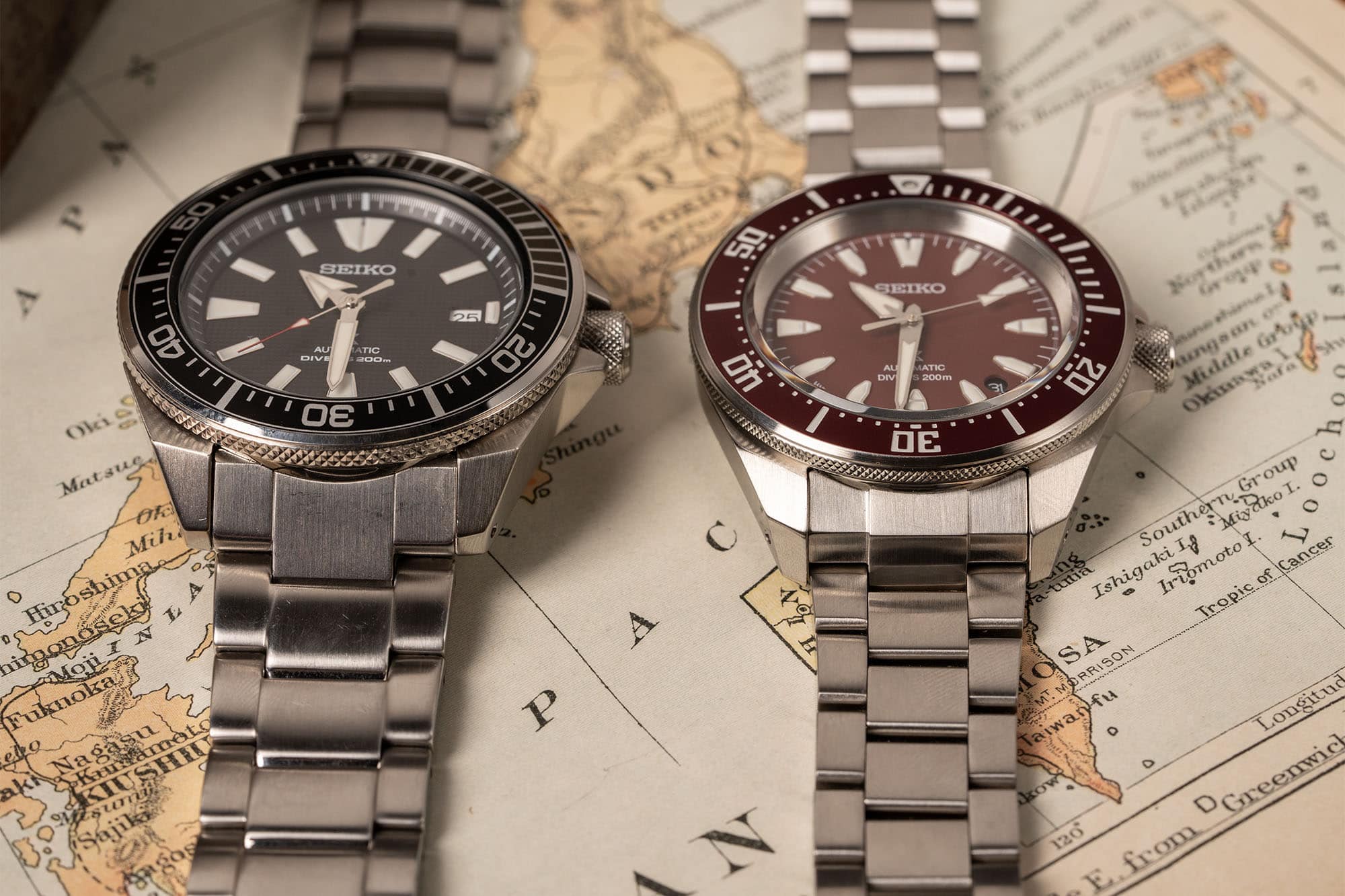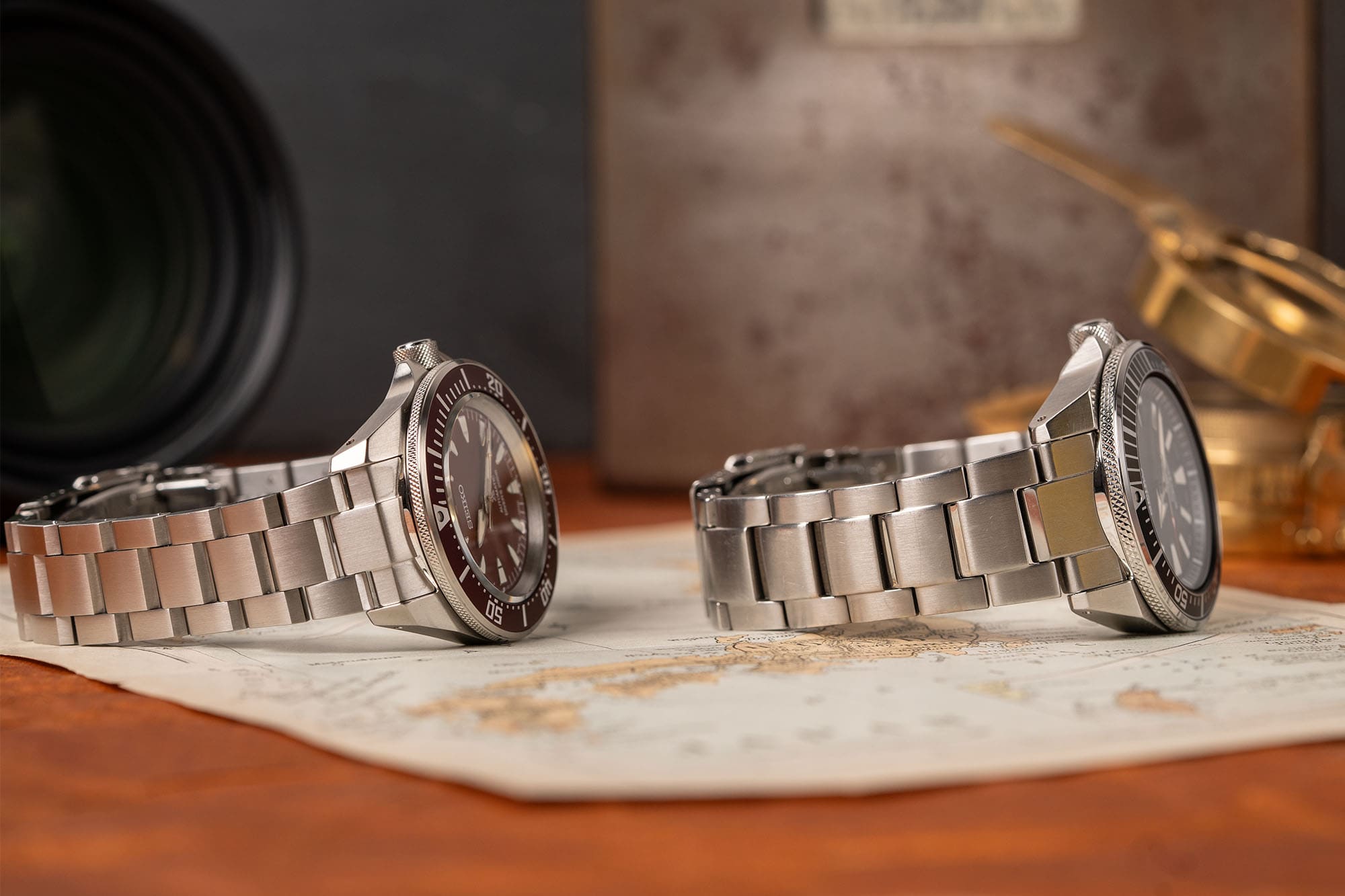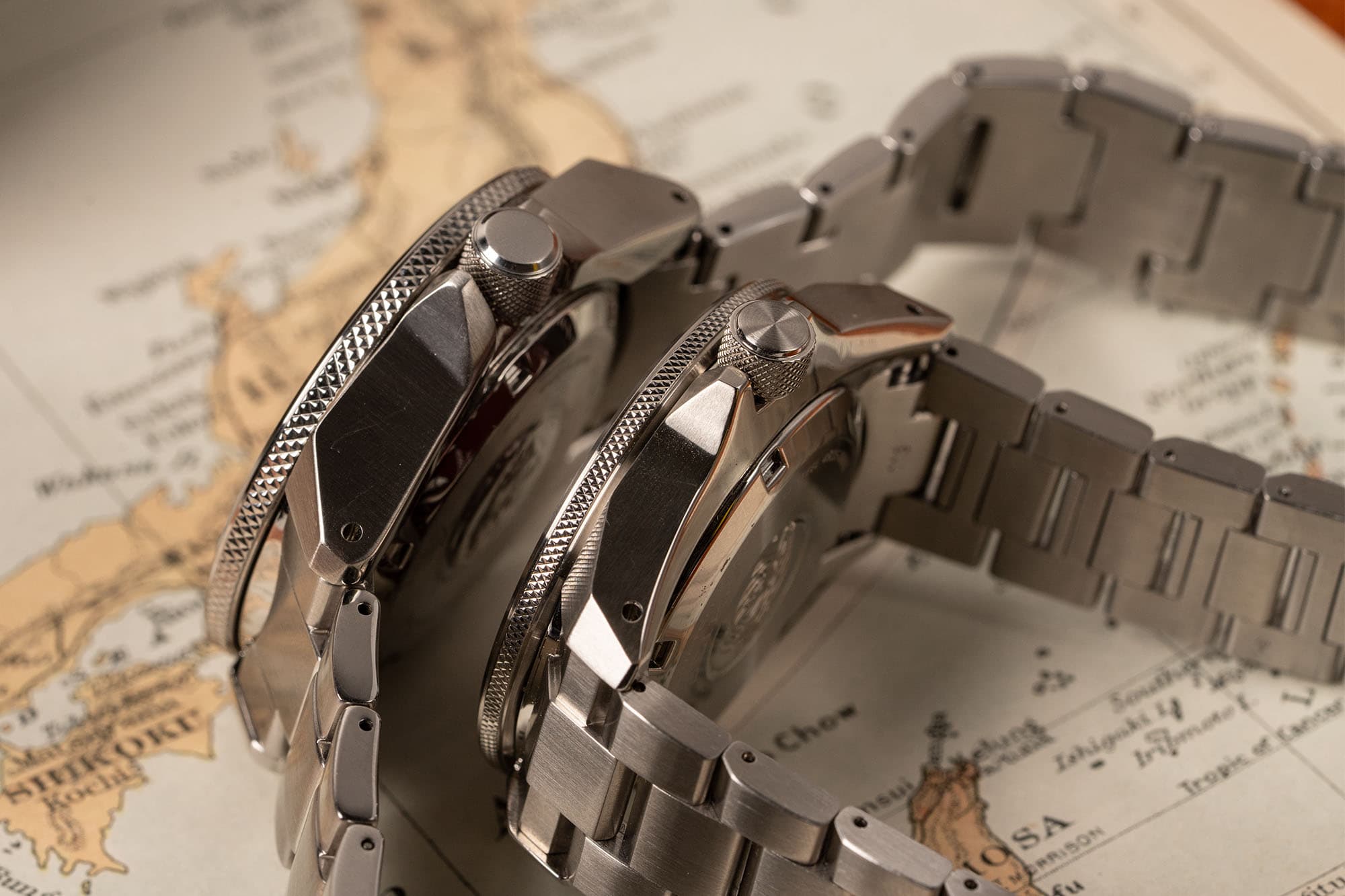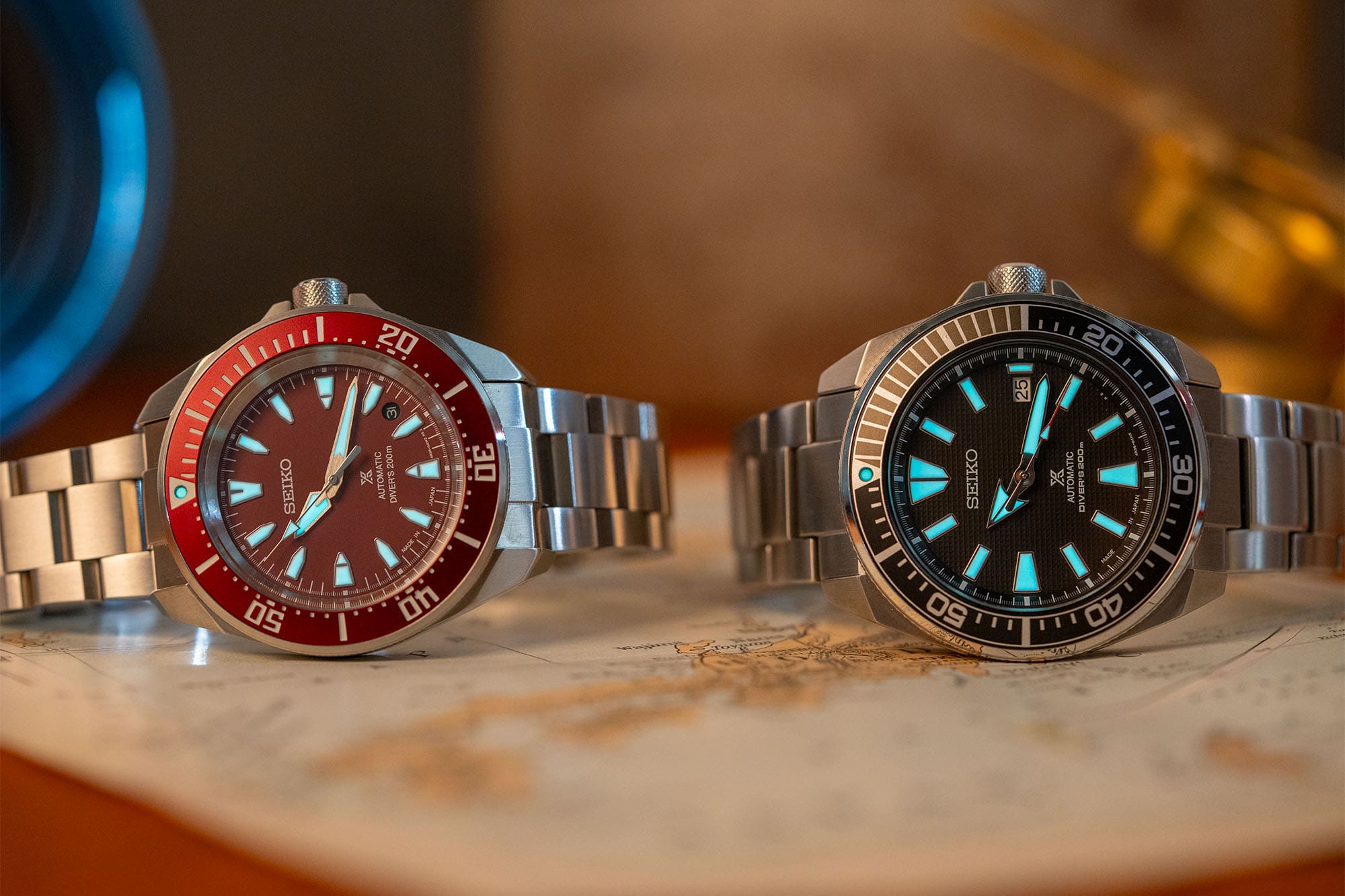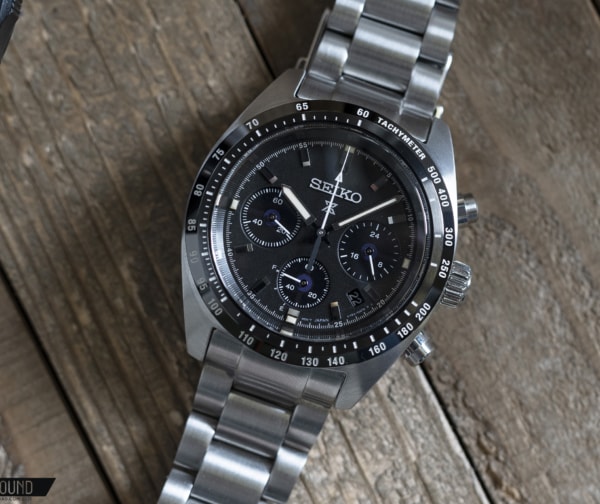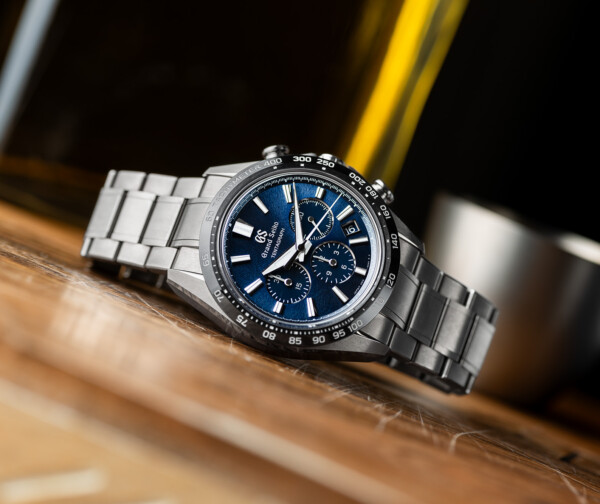Many are quick to point to the venerable Seiko SKX and Seiko Turtle as being the best entry-level dive watches, even going as far as to label them as “must haves” in every collection. That being said, I have always gone a bit against the grain. Now don’t get me wrong, both of those watches have made their way into my permanent collection over the years with the Seiko SKX007 claiming its place as my first serious tool watch, though neither have managed to capture more wrist time than my Seiko Samurai. There is something about the angular architecture, the aggressive handset, and the considerably chunky feel on my wrist that has plucked a heart string within, leading me to argue in its defense and recommend it to those with large wrists akin to my own. So, when I learned that Seiko would be introducing a new generation of Samurai models this year with refined proportions and updated visuals, I jumped at the opportunity to add yet another one to my collection and ordered the red-dialed Seiko Samurai SRPL11.
Hands-On: the Redesigned Seiko Samurai SRPL11
Hands-On: the Redesigned Seiko Samurai SRPL11
While other models in the Seiko lineup have ultimately remained the same over the years, the Seiko Samurai has seen quite a few changes in its relatively short lifetime. Since its inception in 2004, we have seen the Samurai model go from being more of a Seiko mutation, borrowing parts from other sibling models, to being its own thing with bold, aggressive, and unique styling during the second generation in 2017. Yet those changes seemed to fall short of establishing a stronghold on the enthusiast market for entry-level divers. So again, Seiko tweaked the model, eventually giving it the “King” treatment in 2020 with a sapphire crystal and ceramic bezel insert. But that is where the Samurai family has sat for the last four years, in a state of overlooked limbo labeled as an oversized and overly aggressive alternative for those looking to leave the beaten attainable icon path. That is until now, where Seiko has seemingly taken the Samurai back to the drawing board to refine almost every aspect of the watch, giving it more mass appeal in the price segment. So, do these new “refinements” soften the model beyond recognition? Or, do these “fixes” finally create an entry point into the collection for those who have long since been curious?
One holdover from the previous generation is the movement, which has been a topic of hot debate among enthusiasts. Housed beneath the screw-down case back with an embossed wave logo is the automatic Seiko caliber 4R35. Operating at 3hz, or 21,600 VPH, the 4R35 features hacking and hand winding while offering up an adequate power reserve of 41 hours. One small modification here comes in the form of the date wheel, which has been moved from the traditional 3 o’clock position on the dial in favor of its new 4:30 placement. While some may scoff at the 4R family of movements as being older and unregulated, there is something to be said for a tried and tested caliber. It will offer ease of servicing and be fully swappable for an affordable price if things ultimately go wrong (ask me how I know). All that being said, when tested across five different positions for timekeeping, my SRPL11 was keeping time at a reasonable -8 to +6 seconds per day. From there though, the new Samurai begins to set itself apart.
Featuring familiar aggressive angles, the new Samurai measures in with a case diameter of 41.6mm, a thickness of 12.7mm, and a lug-to-lug of 49mm. That is a full 2mm drop in diameter, 1mm drop in thickness, and interestingly a 0.7 mm increase from lug-to-lug. All in all, the wearing experience has completely changed thanks to these dimensions offering up a more comfortable wearing experience. The bracelet also plays a part here as, when equipped, the felt lug-to-lug of the old version sporting male end links measured at 53mm long while the new female end links bring it back down to 49.5mm in length. An interesting thing to note in terms of the profile is that the crystal is now the leading edge, a departure from the bezel-forward design of old and perhaps a drawback for those looking for “professional” diving specifications.
Overall, the case has been overhauled, not just in terms of dimension but also in finishing where we see a more refined approach similar to those higher-end Seikos housing 6R calibers. All forward-facing surfaces have been finished with fine vertical brushing, including the case sides, which marks a departure from the modular look of old, holding a mixture of polished and brushed surfaces. Another visual deviation comes on the lugs, where instead of jutting down from the bezel to a point, the new lugs are cut twice, lessening the aggressive angle towards the wrist. Crown guards still protect the large knurled screw-down crown aiding in this model’s 200 meters of water resistance.
The lug width has also been addressed, measuring 20mm apart instead of 22mm and holding an overhauled bracelet design. Now fully brushed, the 3-link style bracelet terminating at a stamped foldover clasp with divers extensions and 4 points of micro-adjustment is arguably better than it has ever been. The links have been shaped in a way to offer better articulation, the slimmer profile rides well on the wrist, and the overall look blends into the case making a more complete package when paired together. While the drilled lugs allow for an easy swap to a rubber or nylon strap, I would go as far as to argue against swapping the bracelet out immediately. For me, this is a huge win as other Seiko models in this same price category are often criticized for their bracelets causing many to never even wear their watch in its original configuration.
Bezel action does leave a bit to be desired out of the box, though in my experience these models benefit from a little bit of breaking in. At its edge, the knurled pattern of the crown is carried over offering some grip, though not as much as previous generations which have a wider cut pattern. Set inside is a matte, color-matched aluminum bezel insert with contrasting white grooved and filled countdown indices. Rising up, a flat mineral crystal stands guard with an excellent anti-reflective coating resisting glare in direct light. Looking through, the traditionally misaligned chapter ring has been removed in favor of a brushed stainless steel ring causing the dial to present slightly smaller. The printed minute track is relegated to the dial surface, a matte deep red hue which to my recollection is a first for the permanent collection. Applied polished hour indices cut into new geometric shapes with the 12, 3, 6, and 9 having slight deviations for better nighttime legibility are generously filled with LumiBrite material. At 4:30 a small rounded date window is cut in the surface revealing the black date wheel beneath. The date wheel is black on all three models and, although I would have liked to have seen it properly color-matched and don’t typically care for this placement, I am glad to see the cyclops from the King model has been removed and the visual presence of the date reduced. At its center, an all-new set of brushed hands each filled with lume handle time telling with the second hand seeing an increase in arrow tip size, the minute hand staying relatively true, and the hour hand resembling a familiar sword shape rather than the previous large arrowhead. Overall, legibility is excellent with a strong lume performance, something that has become a bit of a benchmark in the dive watch category.
Overall, I am a huge fan of this new generation. It is a bit of a tough pill to swallow knowing that an older model with the same movement was able to achieve a similar price while including a ceramic bezel insert and sapphire crystal, yet the overall level of finishing here is impressive and deserving. Sure, they could have included the 6R caliber rather than the aging 4R35 unveiled in 2011, but let’s be honest, none of us are buying a Seiko for its accuracy. And yes, the 4:30 date window is going to cause the internet commenters to immediately dismiss this watch, though in my use I have found it very inoffensive. I believe that is where the criticisms stop, however. The dimensions are far more wearable for the masses, the bracelet and case are finished on par with other Seikos listed at double its price point, and the design language, color, and deleted chapter ring change up the visual design without losing its endearing core ethos.
For me, it takes a watch model family that I enjoy and refines it. Though the new design language may be a departure from the previous generation, I think it suits the model well. This is a well-executed tool watch, especially for the price segment, that could potentially be an entry point into the Samurai family of watches for an entirely new audience. I am sure that we will see many iterations of this design in the years to come with new colors and potentially a King version, which I will be right back in line for. So, does it dethrone the Seiko Turtle? No, of course not! But at least it provides you with a more modern option ready to take a beating on its next adventure.









 Featured Videos
Featured Videos




